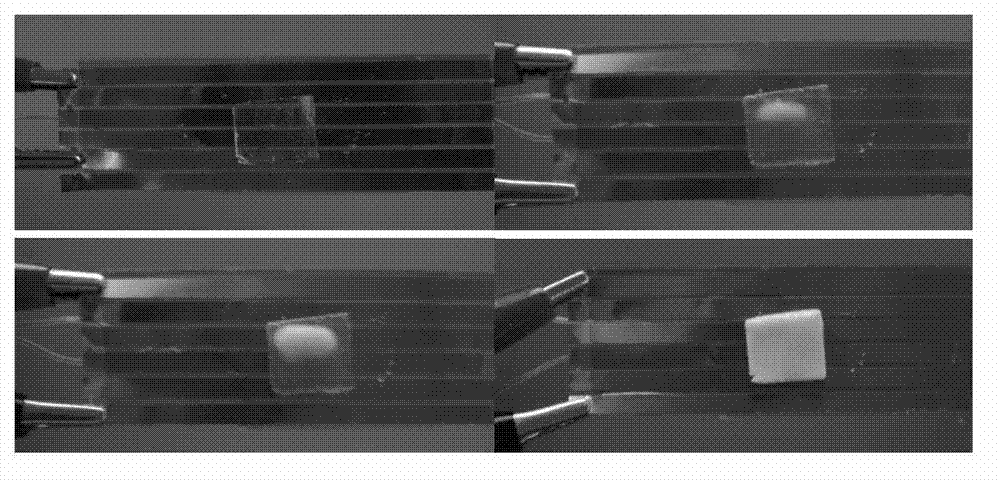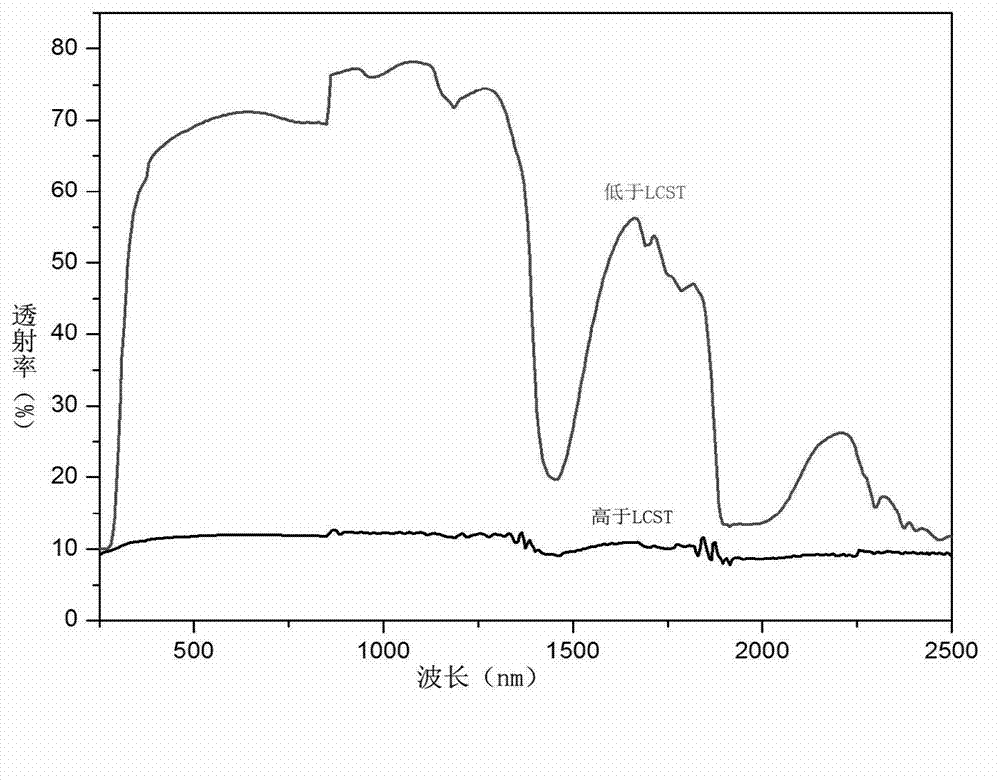Temperature sensor of photonic crystal and preparation method thereof
A temperature sensor, photonic crystal technology, applied in thermometers, thermometers with physical/chemical changes, instruments, etc., can solve problems such as no reaction, and achieve the effect of slowing down the heating rate and reducing the heating rate.
- Summary
- Abstract
- Description
- Claims
- Application Information
AI Technical Summary
Problems solved by technology
Method used
Image
Examples
specific Embodiment approach 1
[0015] Specific embodiment one: a kind of photonic crystal temperature sensor of this embodiment is the block made of hydrogel and monodisperse colloidal microsphere emulsion, or is that hydrogel and monodisperse colloidal microsphere emulsion are coated on The complex obtained on the substrate, wherein the hydrogel is made of monomers, crosslinking agents, initiators and accelerators, and the molar ratio of the accelerators to monomers is 1:3 ~ 7, The molar ratio of accelerator and initiator is 90~110:1, the molar ratio of accelerator and crosslinking agent is 9~11:1, and the molar volume ratio of accelerator and deionized water is 1mol:9L~12L; The molar volume ratio of the monomer and the monodisperse colloidal microsphere emulsion is 1mol:1L~4L, and the concentration of the monodisperse colloidal microsphere emulsion is 20~40g / L.
[0016] This embodiment prepares a temperature sensor in the form of a smart hydrogel PNIPA / photonic crystal composite. This sensor can not only ...
specific Embodiment approach 2
[0018] Specific embodiment two: the difference between this embodiment and specific embodiment one is: the molar ratio of the accelerator and the monomer is 1:4~6, the molar ratio of the accelerator and the initiator is 95~105:1, The molar ratio of accelerator to crosslinking agent is 9.5~10.5:1, and the molar volume ratio of accelerator to deionized water is 1mol:10L~11L. Other steps and parameters are the same as those in Embodiment 1.
specific Embodiment approach 3
[0019] Specific embodiment three: the difference between this embodiment and specific embodiment one or two is: the molar ratio of the accelerator to the monomer is 1:5, the molar ratio of the accelerator to the initiator is 100:1, the accelerator The molar ratio of the accelerator to the crosslinking agent is 10:1, and the molar volume ratio of the accelerator to deionized water is 1mol:10L. Other steps and parameters are the same as those in Embodiment 1 or Embodiment 2.
PUM
| Property | Measurement | Unit |
|---|---|---|
| concentration | aaaaa | aaaaa |
| transmittivity | aaaaa | aaaaa |
| transmittivity | aaaaa | aaaaa |
Abstract
Description
Claims
Application Information
 Login to View More
Login to View More - R&D
- Intellectual Property
- Life Sciences
- Materials
- Tech Scout
- Unparalleled Data Quality
- Higher Quality Content
- 60% Fewer Hallucinations
Browse by: Latest US Patents, China's latest patents, Technical Efficacy Thesaurus, Application Domain, Technology Topic, Popular Technical Reports.
© 2025 PatSnap. All rights reserved.Legal|Privacy policy|Modern Slavery Act Transparency Statement|Sitemap|About US| Contact US: help@patsnap.com


